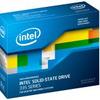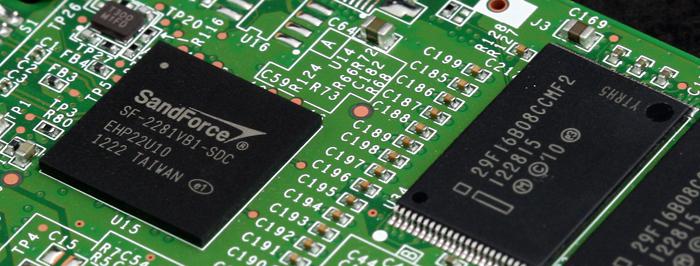Final words and conclusion
Final words and conclusion
While testing the Intel series 335 SSD I got a lot of flashbacks towards the Intel 520 series. Realistically it is nearly the same product aside from 20nm NAND flash memory, but it is a hint slower here and sometimes a notch faster there. Fact remains that Intel has a very fast SSD in their hands 'overall', and once you pass that 350~400 MB/sec barrier we honestly doubt a little if you'd notice the performance increases over say 500 MB/sec coming from 400 MB/sec. Split second loads are still split second, and that is the generic consensus for all SATA3 SSDs really.
What became clear to us during our tests is that Intel has been hard at work optimizing the SandForce based firmwares, it definitely shows with the 335 series as throughout the test sequence the numbers are very consistant with no weird odditires to be noticed at all. The feel good factor definitely rises when nothing out of the ordinary happens.
Overall SSD usage
An SSD is enjoyable, very much so. If you put a drive like this into your SATA 3 compatible laptop or SATA 3 compatible PC, you'll have no idea what is about to hit you. We very much enjoy the grand sustained performance of this SSD series, so you you copy a fast amount of compressed data, then the Series 335 will perform very fast in performance. Make no mistake, replacing an HDD with an SSD in your desktop PC or laptop eliminates the random access lag of the HDD head, it is no longer mechanical. That combined with the performance SATA3 offers these days is simply a massive difference and probably the best upgrade you can make for your computer anno 2012.
SATA Controllers
Some overall recommendations then. Should you be in the market for a SATA 3 SSD then we have a couple of hints though. First and foremost if you have a SATA2 controller only on your motherboard, then you'll get limited at roughly 270 MB/sec read and writes. SATA3 (6Gbps) will free you up from that allowing the SSD to perform in the 500 MB/sec range. It however is important that you connect your SSD towards the proper controller.
We absolutely prefer the performance of the Intel Series 6 and 7 (H67/P67/Z68/Z77/H77/X79) integrated SATA 6G controller over anything else available in the market. If you run the SSD from a 3rd party controller with say a Marvell 6G controller, you will see lower performance. The new AMD 85X xhipsets also offer fantastic performance. The more recent Asmedia controllers we spotted lately on motherboards are also offering good performance, albeit still 20%~25% slower then Intel's controllers. Also make sure you run your drive in AHCI mode, it does make such a difference in performance -- really guys, a big difference.
Prices HDD versus SSD
First a generic rule that I always apply; you probably should stop looking at the Solid State Disk technology as if it were a traditional HDD. We all will be old and grey before the two reach the same prices or top the multiple TB volume storage the HDD offers for less money. Comparing an SSD with an HDD is making a comparison in-between an integrated IGP or a dedicated graphics card, that last one will cost you a heck of a lot more yet you gain incredible overall performance.
It is the very same with an SSD, use it as boot drive on Windows and applications and you instantly have removed a huge bottleneck, namely load and access times. It is a difference in-between night and day (in a proper system). For massive storage like movies, MP3 files and bulky data you do not access on a regular basis, sure that's where the HDD remains the winner as a cheaper storage solution.
Guru3D's rule of thumb; the magic simply is finding a good combination in-between the two and balance things out. Use a nice 240GB SSD for your operating system and applications, and park these movies and MP3 files onto a separate TB HDD. That's where the magic happens. I kid you not, all my test systems and work systems run on SSDs, not once have I considered going back to HDDs. The benefits of a good SSD are simply grand. But that doesn't mean I do not understand the budget and cost dilemma that many of you are facing though.
Concluding
The 335 really is a great SSD with excellent performance and reliability -- but truth be told though is that this SSD is fairly equal to the 520 series with the one difference being 20nm NAND flash ICs being used.
The million dollar question remains pricing, I stated it in this review already, pricing remains the most trivial factor, especially if the new technology doesn't offer any significant improvement. Well, Intel has set the MSRP at $184 for the 240 GB Series 335 SSD. That's 0.77'ish USD per Gigabyte, and that is where the magic is to be found. Unfortunately I just checked pricing and noticed that the etailers are asking well over 200 USD for the SSD. Over time when there is good volume available the prices will drop, and within three months if volume is decent expect a price in the 165 USD range as prices always drop after a while.
Good to know is that Intel updated their Intel SSD Toolbox software suite, grab it here, very handy !
So yeah, the 335 series is a great SSD in terms of performance and reliability. Though fairly close do not expect the numbers that parties like OCZ and Corsair offer with similar controllers, they have very refined firmwares allowing a notch more performance. The performance differences however are too small to ever notice in real-world usage. Once the pricing kicks in at a lower price-point these 335 SSDs could offer great value for money and that lower price is something we are all after.
The 335 is definitely an SSD series to keep on your shortlist and without hesitation recommended.
- Leave/read comments on this product
- Sign up to receive a notice when we publish a new article
- Or go back to Guru3D's front page



